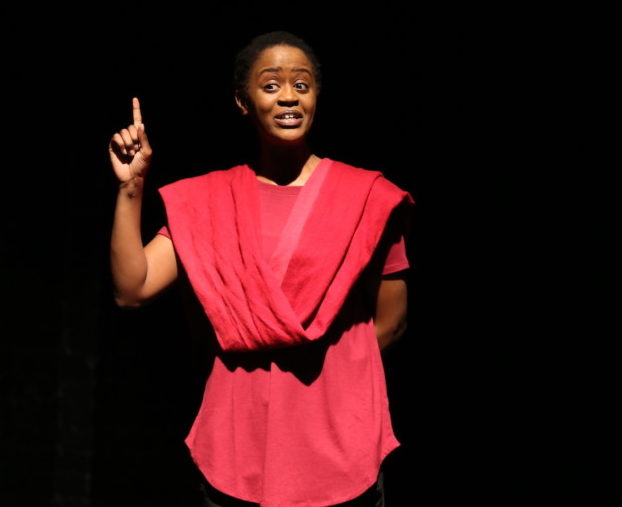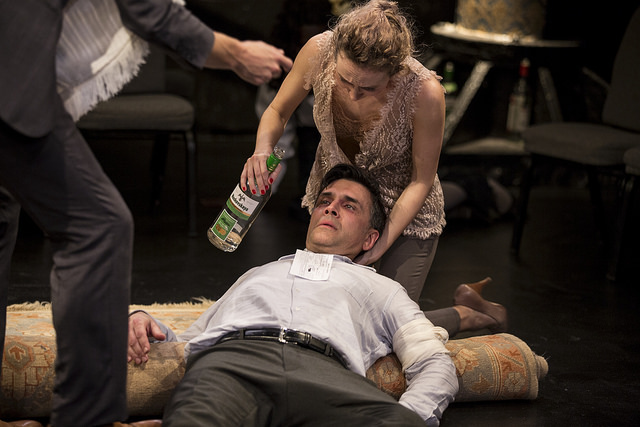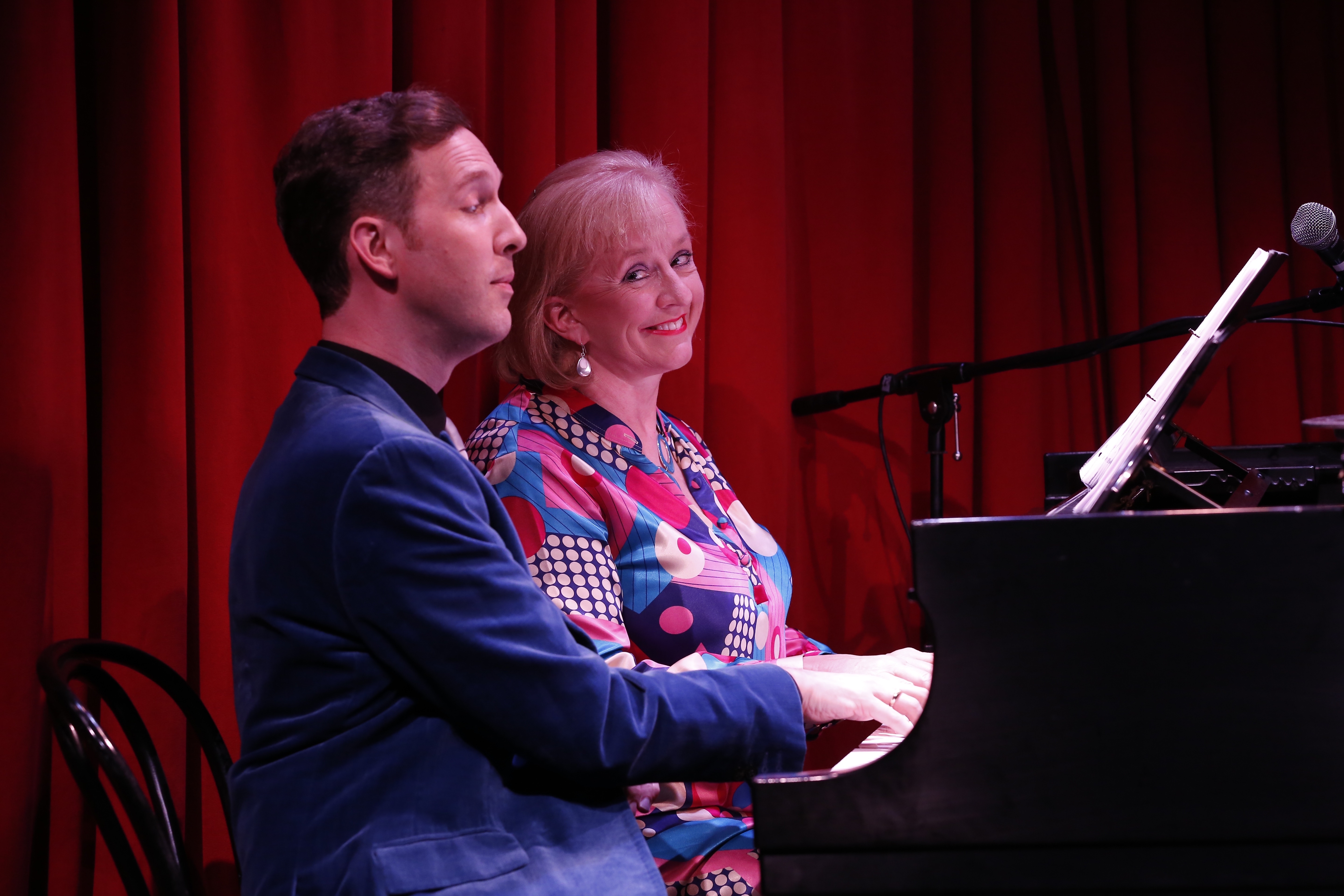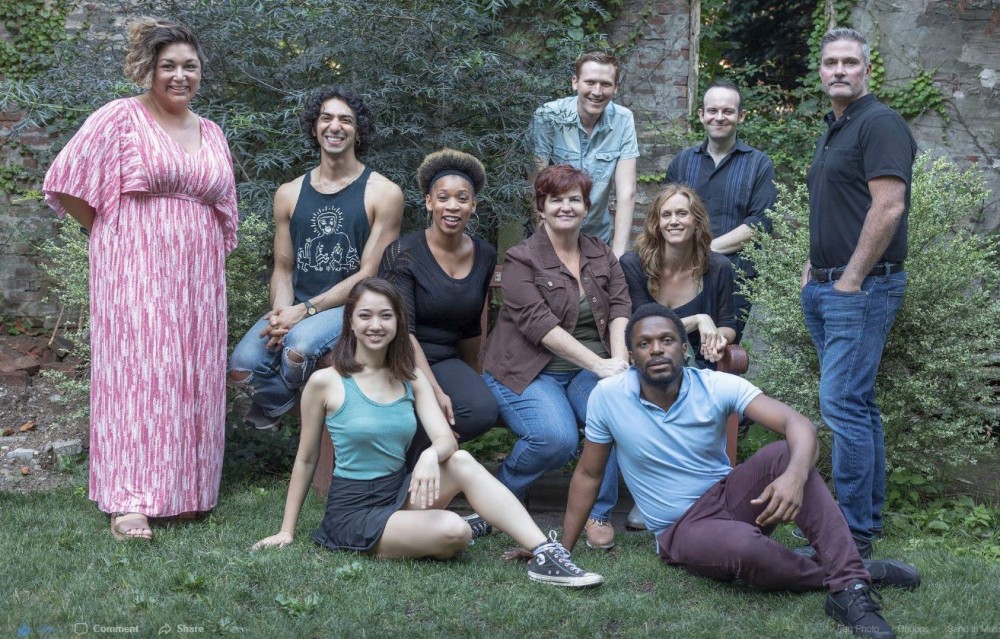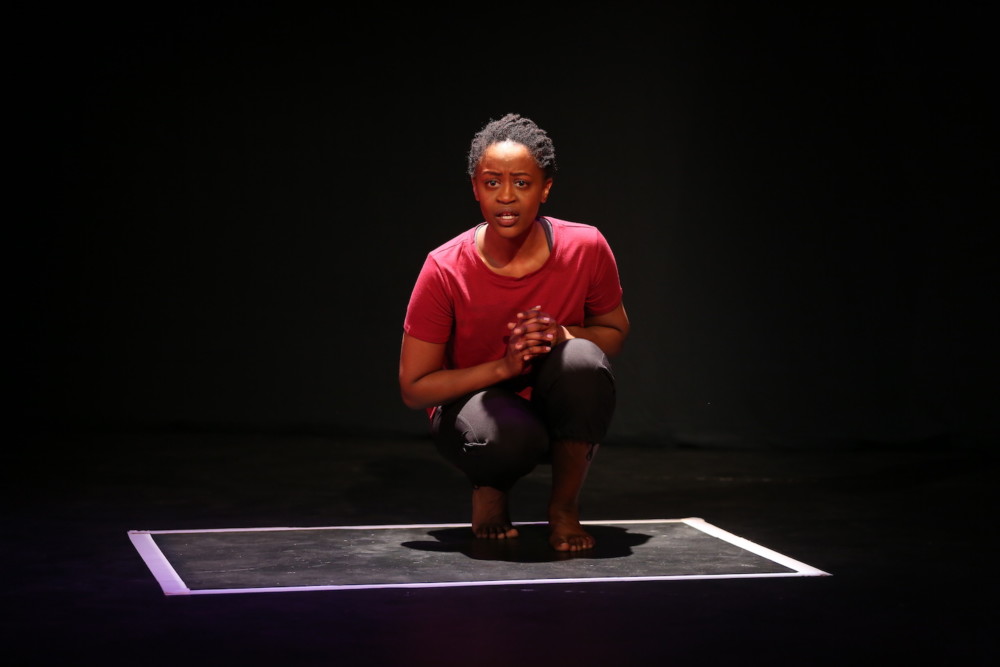
By Samuel L. Leiter
The official diplomatic phrase for the events behind this play are the “1994 Genocide against the Tutsi in Rwanda.” One of modern history’s bloodiest, most ferocious outbreaks of man’s cruelty toward his fellow man, it forms the background to Miracle in Rwanda, a one-woman play memorializing events that happened 25 years ago this month. For all the innate horror of the story, however, and the importance of remembering it in our own troubled times, I found it less moving than expected.
The play begins with a projection providing the barest facts: the shooting down of the Rwanda president’s plane on April 6, 1994; the consequent eruption of genocidal murder by the majority Hutus against the minority Tutsis, who had been living in a long-simmering state of mutual tension; and the deaths of nearly 1 million Tutsis (lower estimates say 800,000) within a three-month period. No deeper context is offered to explain the political/tribal hatreds involved.
Miracle in Rwanda is the true story of a survivor, a 24-year-old Tutsi woman named Imaculée Ilibagiza. Her experience in hiding from the Hutus was dramatized by Leslie Malaika Lewis and Edward Vilga, toured internationally, and is making its Off-Broadway debut at the Lion Theatre on Theatre Row.


This harrowing tale stars Rwandan actress Malaika Uwamahoro as Imaculée and nine other characters living in Mataba, Rwanda. Following radio announcements directing Hutus to kill Tutsis, Imaculée took her father’s advice (he eventually was slain) and sought refuge at the home of a Hutu pastor. She was hidden in a 3’ x 4’ bathroom with five other females, soon joined by a sixth. She remained there for 91 days. The pastor fed the girls what he could. He also gave Imaculée books, one of them helping her learn English.
Miracle in Rwanda includes brief, frightening moments when a pumped-up Hutu militiaman arrives to look for hidden Tutsis, but essentially this is a tale of quiet endurance under conditions of extreme discomfort. It is also a story of faith, Imaculée constantly turning to the Lord’s Prayer, although unable to say the words “as we forgive those who trespass against us.”
Apart from the intrusions of the killer, this difficulty with forgiveness—eventually overcome, of course—proves Imaculée’s greatest problem, since her physical discomforts are depicted in only the most simplified ways, including the lack of other bodies to show just how crowded conditions were. In fact, Miracle in Rwanda, despite its traumatic background, and the sadness of its subject, is not particularly dramatic. Even a potentially heart-rending scene when Imaculée, having escaped to a refugee camp, reads a log of the dead, recognizing members of her own family, is deadened by its soporific pacing.
Like another currently running play about man’s inhumanity to man, All Our Children, concerning the extermination by the Nazis of the disabled, it demonstrates that the historical revelation of monstrous inhumanity does not automatically guarantee strong drama, although that play’s debate about morality at least provides a modicum of intellectual conflict.
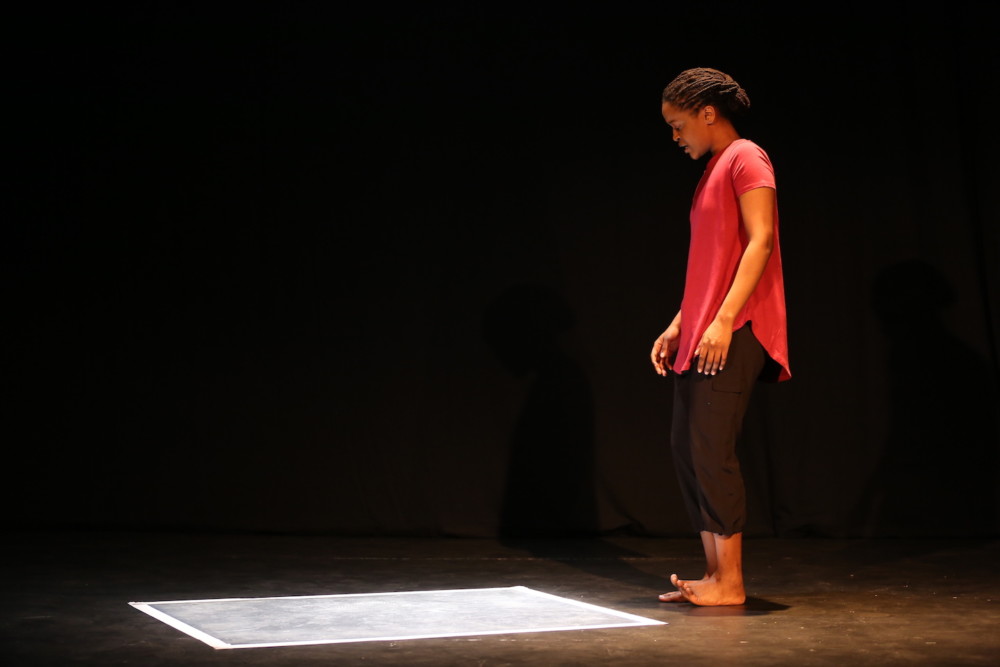

And those already of little faith are unlikely to have their religious leanings strengthened by a story in which a handful of women are saved from slaughter when close to a million of their countrymen are cut to ribbons with machetes. Surely, some among them were as pious as Imaculée. Miracle in Rwanda or luck in Rwanda?, they might ask.
The play is very well acted by the versatile and appealing Uwamahoro, who changes her voice and movements (she’s an excellent mime) rapidly to go from role to role. She performs on a bare stage, wearing a red top, loose black pants, and, after removing them, no shoes. At center, the tiny bathroom area is outlined on the floor in tape. Taiwo Heard’s sound design helps conjure up the world outside.
Erich Keil and Gina Costagliola’s lighting, including the occasional spotlighting of portraits showing Imaculée’s family on the back wall, offers effective atmosphere. This is especially notable when Imaculée is in her cramped space, hit by a beam of light from above. We see time passing as the lights rise after each of a series of blackouts, disclosing her crouching, standing, or sitting in a new position. The drawn-out cues, though, too often leave us in the dark.
Miracle in Rwanda runs 70 minutes. It often seems, however, under George Drance’s sluggish direction, that it could run less than an hour; a tortoise-like pace, interminable pauses, and actionless scenes help what might have been a potent piece about Rwanda become a sleepy sojourn in Yawnda.
Miracle in Rwanda. Through May 11 at the Lion Theatre/Theatre Row (410 West 42nd Street, between Ninth and Tenth Avenues). 70 minutes, no intermission. www.miracleinrwanda.nyc
Photos: Carol Rosegg


